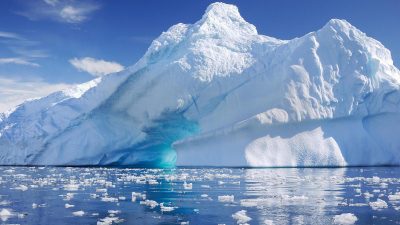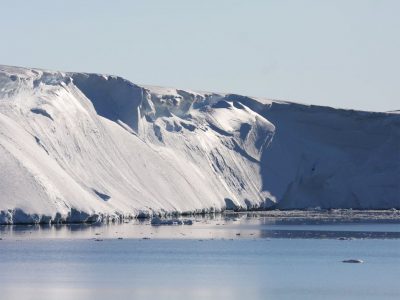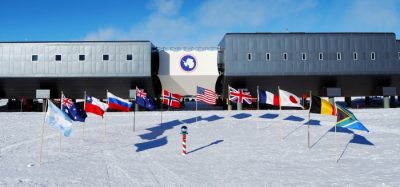By
Rupen Savoulian
The title above comes from an engaging article published in The Conversation online magazine earlier in July 2016. Entitled ‘Why Australians should care about the South Pole’, the essay is a summary of a book on that subject by Associate Professor Elizabeth Leane from the University of Tasmania.
The article, written by Leane, provides a succinct overview of her findings in answering the question above. A number of countries make claims on Antarctic territory, each with its own history of scientific and exploratory involvement in that continent. The Arctic and the North Pole have long been the targets of interest and competition by the various imperialist states, until today. However, let us not dismiss the importance of Antarctica.
Let us not miscontrue anything here; Australians are already interested in Antarctica, with increasing and disturbing news of the adverse impact of global warming on the icy continent: the East Antarctic glaciers are melting at rates more rapid than the initial expectations of scientists; the eastern Totten glacier being the main cause of concern. A team of scientists returned from an expedition to East Antarctica in 2015 and reported that warmer ocean waters were causing the Totten glacier to melt from below.
Totten glacier – PA photo
This news is on top of the already worrying trend that in West Antarctica, the ice sheet there is losing twice as much ice now as compared to the last survey, and its collapse is a critical possibility. The West Antarctic ice sheet is a sword of Damocles hanging over the head of humanity, and its melting has been observed and cataloged by climate scientists for half a century.
The specific, measured adverse consequences of global warming are one big reason to be interested in the icy continent. But these concerns are part of the wider campaign around human-induced global warming. There are many other reasons, specific to Antarctica, that make that continent an endlessly fascinating and rewarding experience in its own right. The scientific value of continued exploration and discovery in Antarctica make that icy region one of the most interesting places on Earth.
Whenever I raise the subject of Antarctica and the South Pole, my fellow Australians usually respond with a mixture of bewilderment and condescension borne out of a sense that interest in Antarctica is a general waste of time and energy. My first instinct is to respond with the enthusiastic contempt exemplified by Samuel L Jackson in Pulp Fiction, brandishing a weapon of some description, loudly daring my interlocutor to repeat their inane question of ‘why Antarctica?’ on pain of physical obliteration.
This method, while personally satisfying, is not the preferred technique of esteemed writers and creators of cultural capital. So, placing our initial response on the back-burner, it is with great pleasure that I can highly recommend The Conversation as a source of information regarding the scientific and political importance of the Antarctic.
Australia has had a long and deep involvement in the continent. While the popular image of the Antarctic is one of icy remoteness, isolation, ferocious weather and tragic exploration events, this is only one side of the story. As Professor Leane writes in her article:
The 1959 Antarctic Treaty, which declared the continent a place of peace and science and put national claims on hold, seemed to leave behind the imperial ambitions that produced the “race to the pole” in the early 20th century. And while Antarctica’s potential mineral resources are an ongoing source of concern, the South Pole, sitting atop almost 3km of ice, is not an obvious place to drill.
Now occupied by a large scientific research station, where (among other activities) astronomers use giant telescopes to study cosmological events, the South Pole is often assumed to be a politically neutral place, immune to the clamour going on in the north.
So it is not just the fact of ecological change that makes Antarctica important. The Antarctic Treaty was intended to place inter-imperial rivalry on hold, avoiding the unnecessary competitive outburst over that land in the late nineteenth and early twentieth centuries. It provided a framework for international scientific cooperation, and this has produced results: scientific and cultural ties between Australia and China have been evolving positively since 1984, the year the Chinese government began its first scientific expedition to Antarctica. China now has four Antarctic bases, and in 2014 Chinese President Xi Jinping visited Hobart and signed a memorandum of understanding with Australia for the purpose of expanding cooperation in the Antarctic region and Southern Ocean.
However, not all is smooth sailing – various countries, including Australia, have made territorial claims over portions of Antarctic territory. The competing wedge-shaped territorial assertions by the rival countries have resulted in making Antarctic territory resemble portions of a meringue pie, as Professor Leane stated. All of the claimants mapped out territory that all meet at the South Pole. The latter is not the geographic centre of the continent, however, it is the southernmost point of the Earth.
Interestingly, at latitude 90-degrees South, it is easier to travel to than the North Pole; the latter is in the middle of the Arctic Ocean, the South Pole sits on stable solid land. The United States established a scientific station, the Amundsen-Scott South Pole station. Sitting in the middle of the rival territorial claims, the US does not currently make any claims in Antarctica, but is positioned to do so in the future, should that decision arise.
Amundsen-Scott South Pole station
There are only a few frontiers left on the Earth that can truly be said to remain unexplored. Vast sections of Antarctica fit this definition. However, it is not just the icy land mass of the continent that is open to exploration; the enormous land underneath the ice sheets is a large area of terra incognita. That is the description of the territory that lies underneath the Antarctic icy mass provided by an article published in The Conversation called ‘What lies beneath Antarctica’s ice? Lakes, life and the grandest of canyons.’
The authors go on to explain that deep beneath the solid ice-mass, lies a complex and as yet unmapped system of subglacial lakes, rivers and canyons. There are currently 400 known lakes in this subglacial environment, and more are being identified:
Under such a large volume of ice, how is it possible for water to exist at all without freezing? The answer is pressure: when a large weight of ice is pushed onto water, it can stay liquid at temperatures well below the normal freezing point. What’s more, the large body of ice actually insulates the bed and protects it from the very cold air temperatures above.
The liquid water is created by heat from the Earth’s interior and from the friction generated as ice flows over the bedrock, which can melt the underside of the ice sheet. It is this water that flows into the subglacial lake basins and eventually into the ocean.
The largest of these known subglacial lakes is Lake Vostok, covering an area of 12 500 square kilometres, located underneath Russia’s Vostok science station in the Southern Pole of Cold, part of the East Antarctic ice sheet. In these climatically harsh environments, microbial life has been found.
In Lake Whillans, located in West Antarctica, a diverse ecosystem of single-celled organisms was discovered in 2013 by an American research team drilling through the overlying glacier to extract water samples from the lake. These microbes have never before seen the sun. So how do they survive? The microbes rely on the minerals from the sediments and bedrock, with the constant pressure of the glacier above grinding the rock into powder, thus making minerals available for microorganisms without the need for photosynthesis. As the authors Dow, Graham and Cook explain in their article:
Such life thrives in this harsh environment without sunlight for photosynthesis. Instead, the microbes depend on the oxidation of methane and ammonia, derived from sediments that are hundreds of thousands of years old. This momentous discovery of life in such a harsh and unforgiving environment may provide scientists with critical information on the development of marine life cycles.
Antarctica is not the exclusive preserve of one country or international power. It is the common heritage of humanity. As such, international scientific and political cooperation is not only desirable but necessary to study that land, preserve its ecosystem, and avoid the climatic catastrophe that awaits us should Antarctica continue its current disastrous course towards sustained melting and collapse due to global warming. The future of Antarctica should be of top priority not just for all Australians, but for the international community.





No Comments Yet!
You can be first to comment this post!